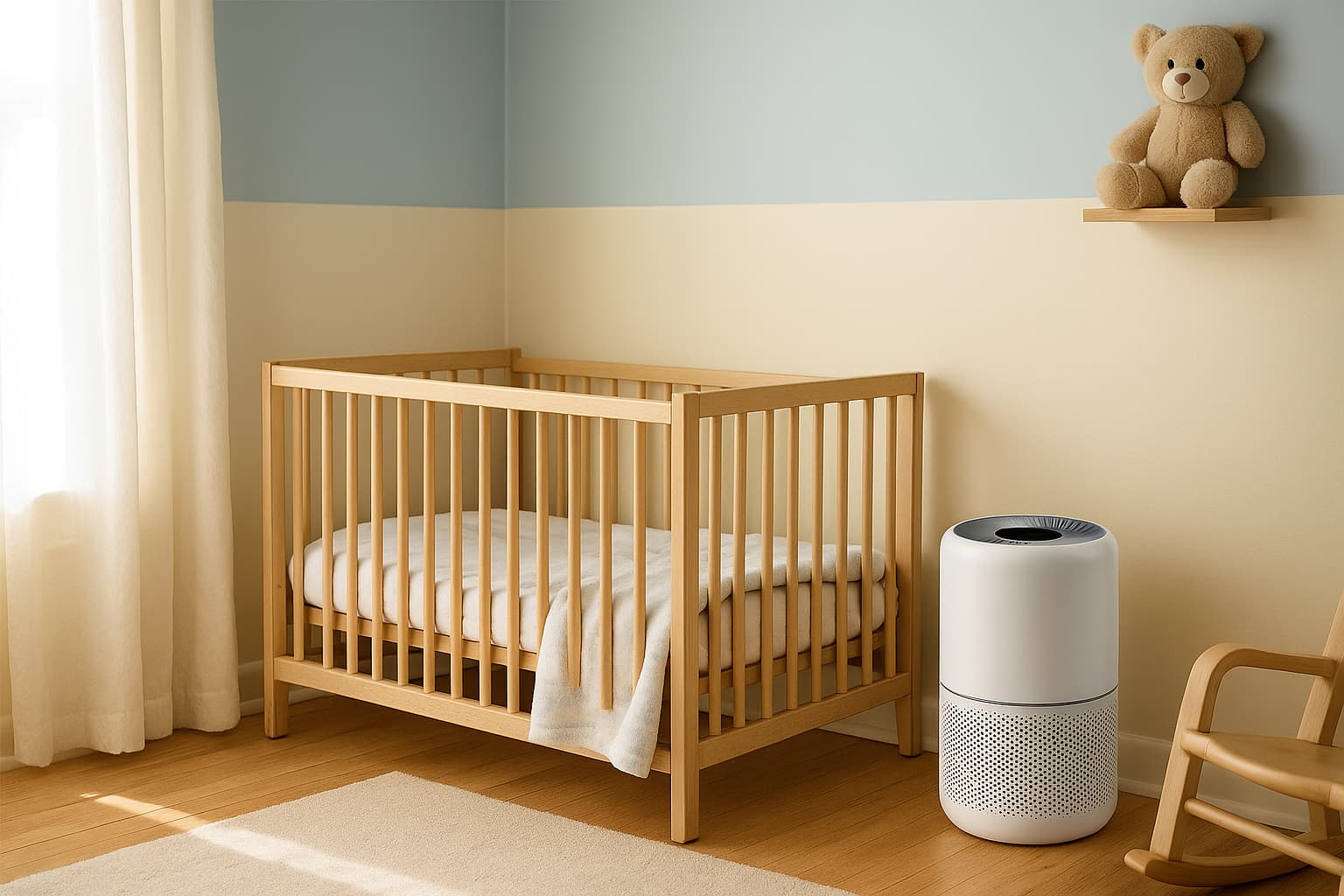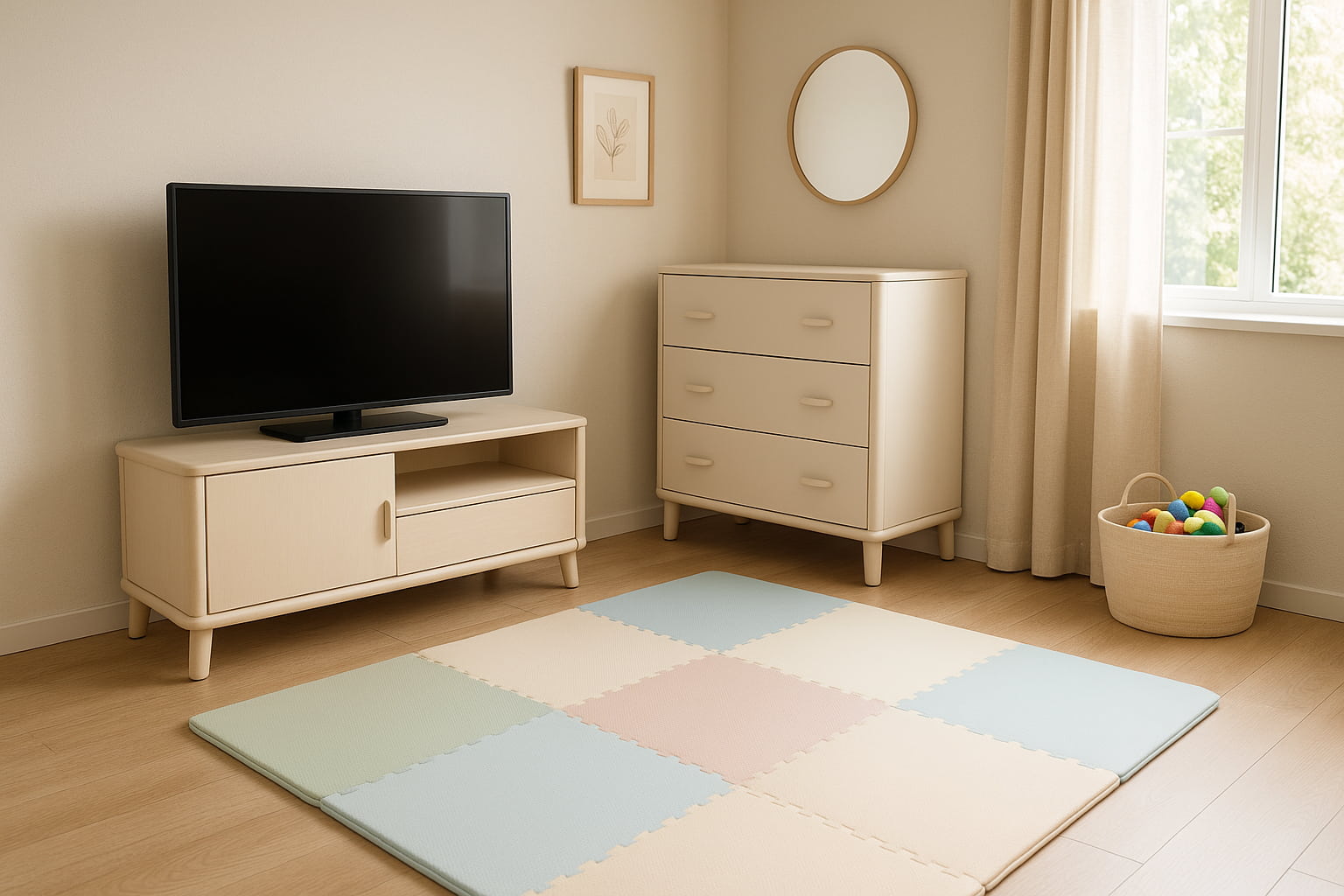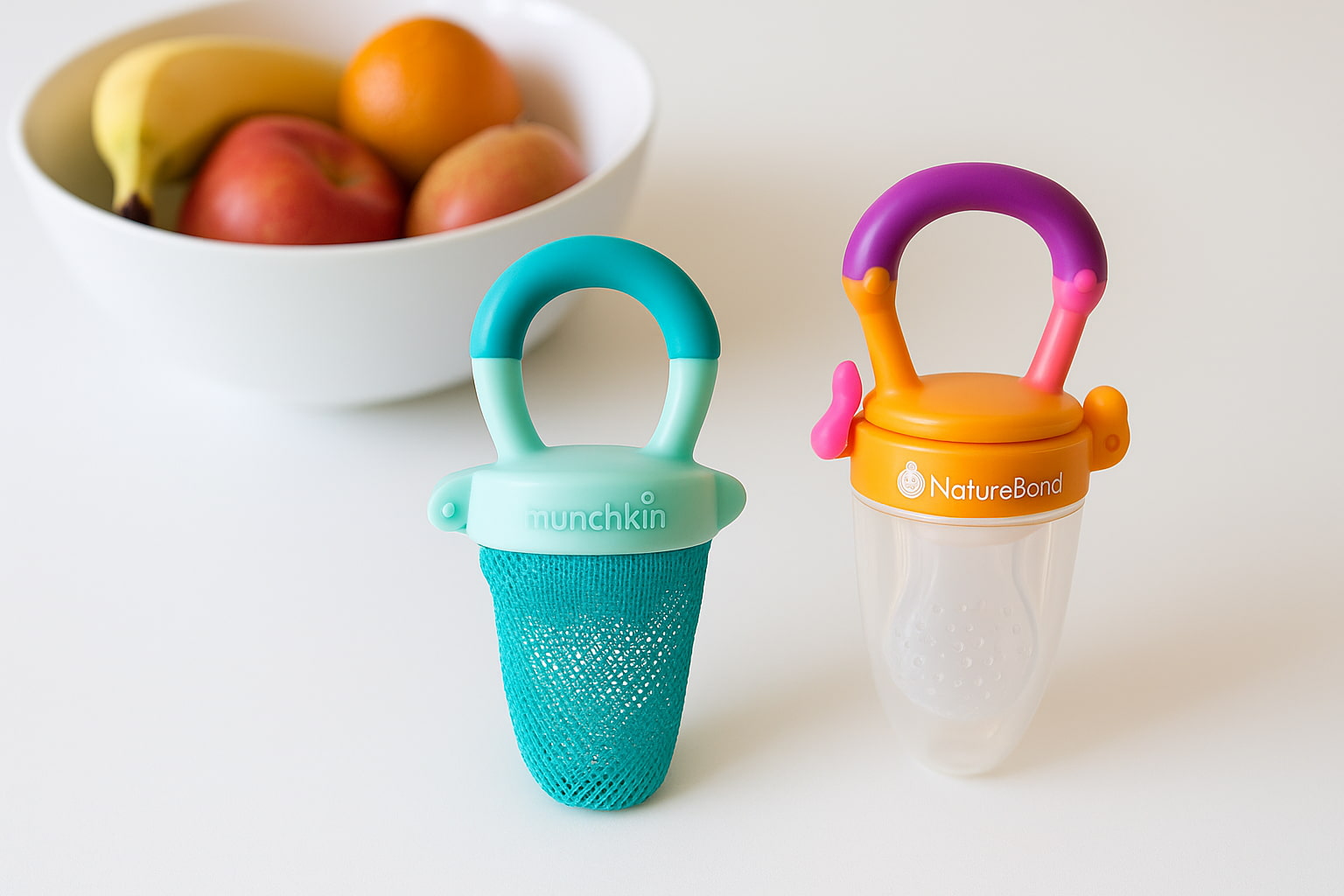If you’ve got a baby on the move, you’re likely already securing furniture, plugging outlets, and padding sharp corners. But there’s one hidden risk many parents overlook: fire hazards.
In this guide, we share pediatricians top tips on fireproofing homes with babies, including practical, medically informed advice to prevent emergencies before they happen
. Whether you’re a first-time parent or just moved into a new place, these tips will help you build a safer home environment without overwhelm.
🧠 What Scares Pediatricians Most About Home Fires
When pediatricians talk to new parents about fire safety, they’re not just thinking about accidents; they’re thinking about how fast those accidents turn dangerous.
Here’s what truly worries them:
🔥 Pediatricians aren’t trying to scare you; they just want you to see how small changes today could save everything tomorrow.
🚨 Why Pediatricians Stress Fireproofing in Babyproofing Plans
Pediatricians see the aftermath of home injuries far too often. Burns and fires are among the top causes of accidental injuries in young children, according to the AAP.
Babies are curious and can’t sense danger, so fireproofing should be a key part of babyproofing.
🔥 7 Pediatrician-Approved Fireproofing Tips Every Parent Should Follow
These tips go beyond the obvious. They’re simple, but incredibly important when your baby is starting to crawl, pull, and explore everything in sight.
Here’s what pediatricians want you to do:
1. ✅ Install Smoke Alarms in All Key Areas
Babies can’t tell you when something’s wrong, but a smoke alarm can.
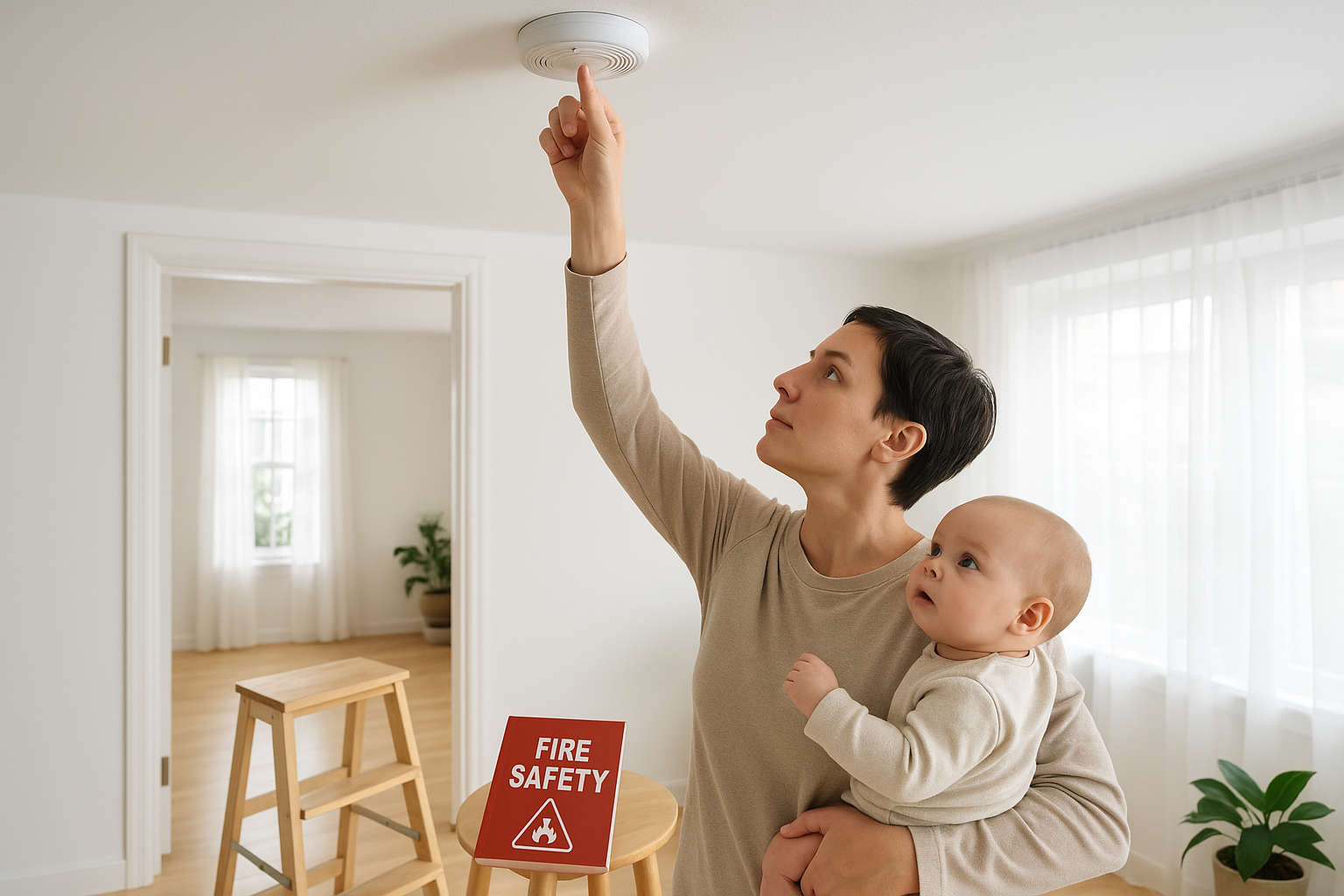
- Place one in every bedroom, hallway, and near the kitchen.
- Test them once a month (set a reminder!).
- Use models with battery backup in case the power goes out.
2. 🔌 Avoid Extension Cords in Baby Spaces
Most extension cords aren’t child-safe; they overheat and get pulled easily.
- Never run cords under rugs or behind cribs.
- Avoid placing multi-plug adapters close to baby play areas or changing tables.
- Keep cords coiled short and secured behind furniture.
🔌 Worried about cords and overheating near your baby? Don’t miss our expert breakdown: Best Outlet Covers for Baby Safety in 2025, which covers smart ways to block open sockets and manage plug areas safely.
3. 🕯️ Ditch Open Flames & Switch to Flameless Candles
Open flames + curious hands = disaster waiting to happen.
- Use flameless LED candles for ambiance.
- Keep matches and lighters in locked drawers.
- Avoid incense or oil burners in nurseries altogether.
4. 🔥 Double-Check Space Heater Placement
Space heaters can start fires quickly if knocked over or blocked.
- Use only certified, tip-proof heaters.
- Keep them 3 feet away from curtains, furniture, and baby blankets.
- Never leave one on while you sleep or leave the room.
5. ☁️ Empty the Dryer Lint Trap After Every Load
It’s easy to forget, but lint is highly flammable.
- Clean the trap after every use.
- Check behind the dryer monthly for buildup.
- Don’t overload the machine, especially with baby blankets or bedding.
6. 🍳 Use Back Burners and Stove Guards While Cooking
Little hands can reach stove knobs faster than you think.
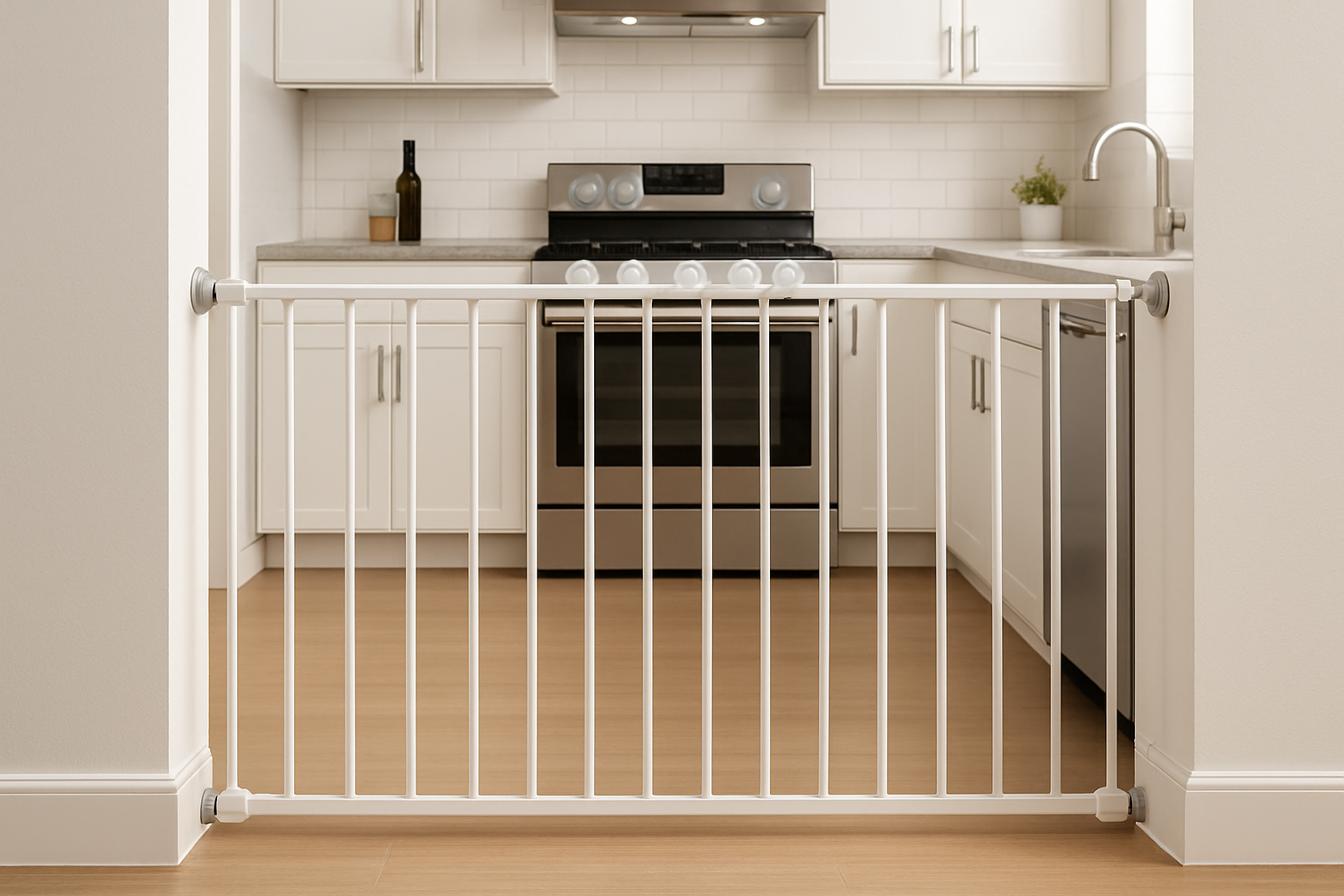
- Cook on the back burners whenever possible.
- Use stove guards and knob covers to block access.
- Never leave pans unattended, not even for a quick diaper run.
7. 🚫 Keep Chargers, Diffusers, and Gadgets Out of Baby Zones
Many fires start from everyday electronics overheating or shorting out.
- Unplug chargers when not in use.
- Don’t leave nightlights or baby monitors on soft surfaces.
- Avoid placing diffusers near flammable materials like curtains or stuffed toys.
💡 Curious how fire risks vary by room? Check out our trusted guide: Why Baby-Proofing Electrical & Fire Hazards Is Essential. It breaks down why fireproofing your entire home isn’t just smart, it’s necessary.
🧠 Expert Insight
Most house fires that injure babies are completely preventable. According to the U.S. Fire Administration, working smoke alarms can cut the risk of death in half. Pairing that with child-specific safety protocols is what truly makes a home baby-safe.
🔍 Did You Know?
Many pediatricians advise parents to avoid using extension cords or multi-plug adapters near cribs or baby play areas. These items overheat more easily and often lack the safety certifications needed for baby zones.
The National Safety Council provides reliable advice on how to make your house a safer place for children.
🧸 Fire Safety Without Fear: How to Start Small
Feeling overwhelmed by all this? Totally normal. The good news? You don’t have to fireproof everything all at once.
Here’s how to ease into it:
💡 Just one tiny upgrade today is better than putting off a full plan until “someday.” Fireproofing can feel empowering, not scary, once you take the first step.
🧸 Final Thoughts: Protecting Your Baby Starts with What You Don’t See
We babyproof corners and cover outlets, but what about the sparks we don’t expect?

Fireproofing your home might not feel urgent until something scary happens. That’s why pediatricians recommend building safer routines before your baby starts to crawl, reach, and explore.
Whether it’s unplugging devices, switching to flameless candles, or moving heaters, every little change adds a layer of protection.
You don’t need to panic. Just start with the room your baby spends the most time in, and build from there.
🛡️ Want to go beyond fire safety and fix the most common hazards parents overlook? Don’t miss our guide on Common Babyproofing Mistakes to Avoid, it’s full of things pediatricians wish more families knew.
✅ Disclaimer:
This article shares general safety advice and should not replace professional medical guidance.
✍️ Author Byline:
Written by our team of baby safety editors, guided by pediatric insights and real parent experiences.


